
# 1059Ad - 1965 25c Paul Revere, Tagged, Imperforate Error
1965 25¢ Paul Revere
Liberty Series Coil
City: Wheaton, Maryland
Quantity: Unknown
Printed by: Bureau of Engraving and Printing
Printing Method: Rotary Press
Perforations: 10 Vertically
Color: Green
Paul Revere’s Midnight Ride
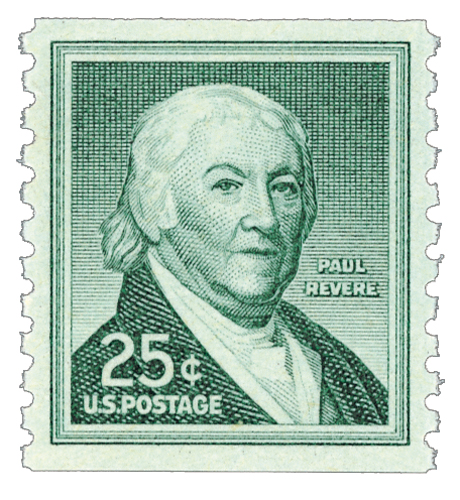
On April 18, 1775, Paul Revere took his historic ride to warn the people of Lexington and Concord that the British were coming. It’s one of the most famous tales from the Revolutionary War, popularized and romanticized in a poem by Henry Wadsworth Longfellow.
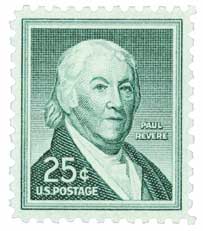
Born in Boston, Paul Revere was a leader in the patriot group known as The Sons of Liberty, whose members participated in the Boston Tea Party. In 1774, he was hired by the Boston committee of Correspondence and the Massachusetts Committee of Safety to work as an express rider. In that role, he would carry news, messages, and copies of resolutions to and from New York and Philadelphia.
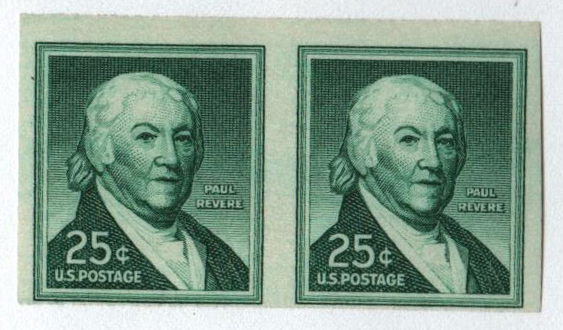
In the spring of 1775, British Army soldiers were stationed in Boston, where their numbers had grown since the Boston Tea Party. The British planned to disarm the residents of the Massachusetts colony and imprison its leaders.
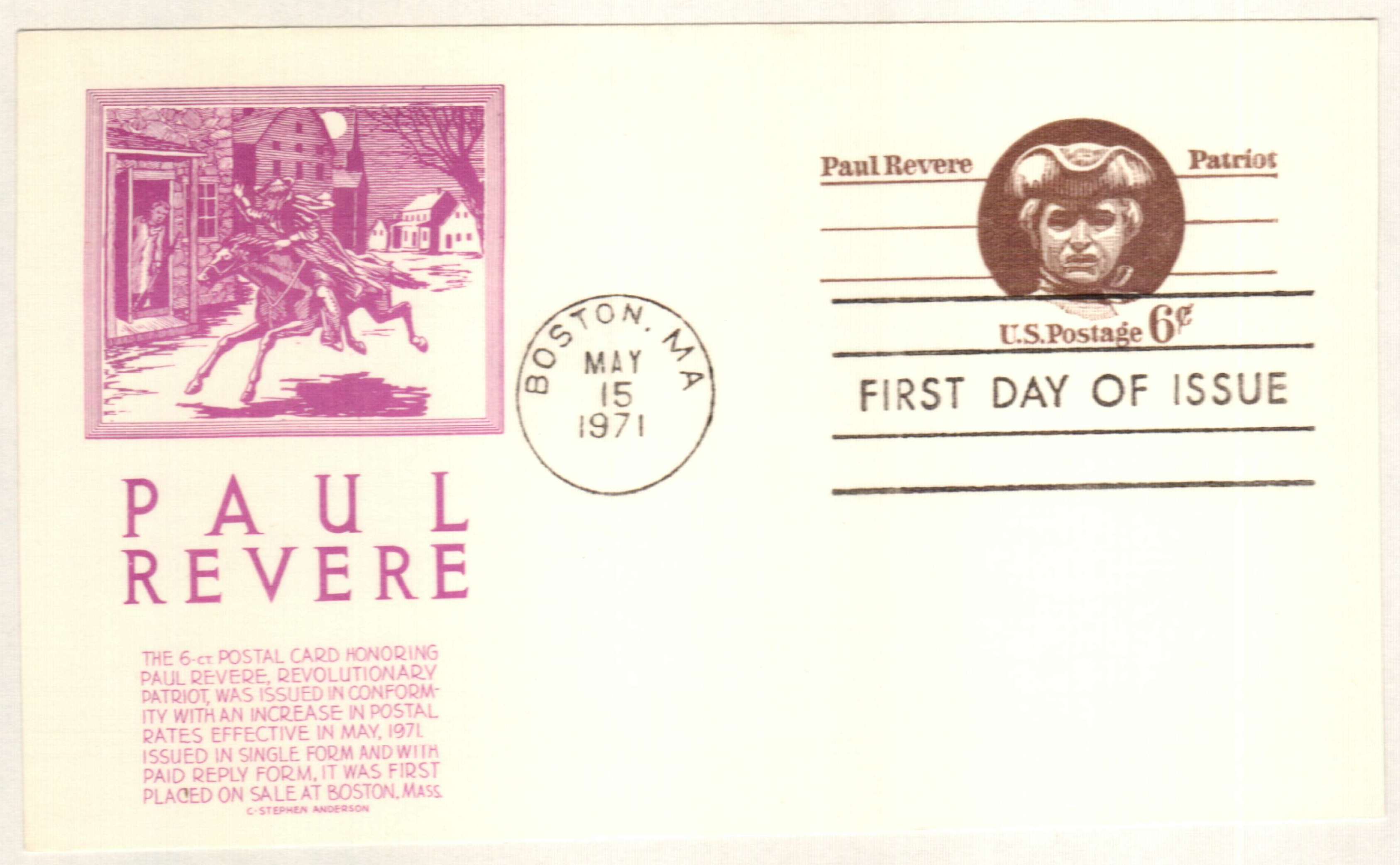
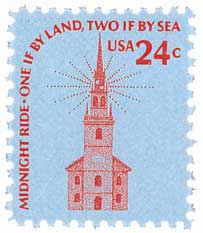
Wanted by the British for their role in the independence movement, Samuel Adams and John Hancock fled to Lexington, where they stayed with Hancock’s relatives. Revere was then called to meet with Dr. Joseph Warren, who asked him to ride to Lexington to warn Hancock and Adams that the British were coming to arrest them.
The weekend before his planned ride, Revere spoke with fellow members of the Sons of Liberty, and they arranged a lantern signal using the bell-tower of North Church to warn of the British approach. The signal would be sent by lighting one lantern if they marched by land or two if they rowed “by sea” across the Charles River to Cambridge.
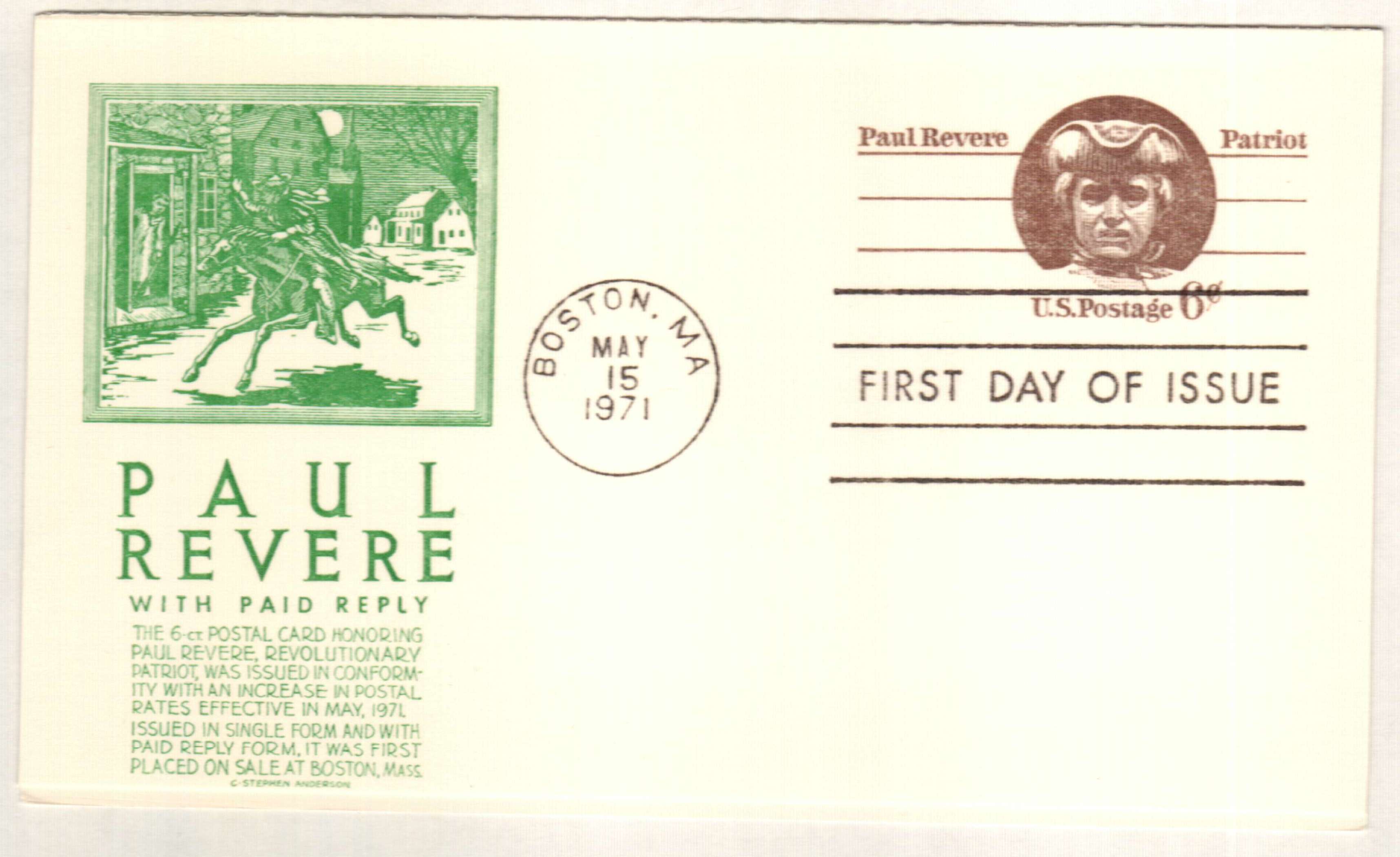
On the evening of April 18, Revere traveled to the North Church to have the patriots stationed there light two lanterns to alert Charlestown that the British would arrive by sea. Two associates then rowed Revere across the Charles River. Once across, he borrowed a horse and set out on his ride. Along the way to Lexington, he stopped at each house that he passed to warn them that the British were coming.

Revere reached Lexington around midnight and approached the house where Adams and Hancock were staying. The man guarding the house told him he made too much noise, but Revere replied, “Noise! You’ll have noise enough before long. The regulars are coming out!” He then went inside and warned Adams and Hancock.
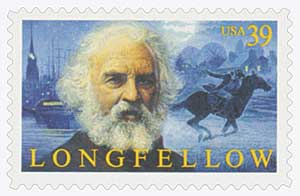
With that part of his mission complete, Revere prepared to continue on to Concord, where a large amount of weapons and supplies were hidden. Before leaving town he met William Dawes, another rider who’d received the same mission but left from a different town. They were also joined by a third rider, Dr. Samuel Prescott. However, the three men were caught by a British patrol shortly after joining up, jeopardizing their mission to warn the people of Concord.
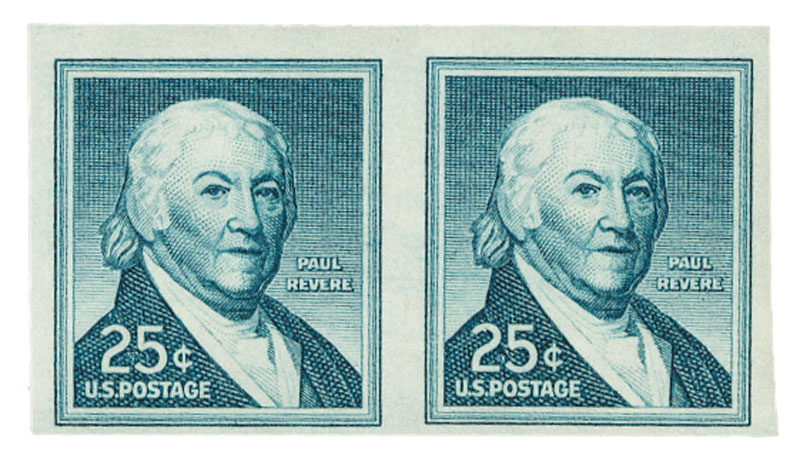
Prescott and Dawes both escaped shortly after being taken, but Revere was held for much longer. After he was released, he had to walk back to Lexington, where he witnessed part of the battle on the Lexington Green. Along the way, he also helped Adams and Hancock who were on their way to Woburn, Massachusetts. In the end, only Prescott made it to Concord in time to warn the militia of the British approach.
1965 25¢ Paul Revere
Liberty Series Coil
City: Wheaton, Maryland
Quantity: Unknown
Printed by: Bureau of Engraving and Printing
Printing Method: Rotary Press
Perforations: 10 Vertically
Color: Green
Paul Revere’s Midnight Ride

On April 18, 1775, Paul Revere took his historic ride to warn the people of Lexington and Concord that the British were coming. It’s one of the most famous tales from the Revolutionary War, popularized and romanticized in a poem by Henry Wadsworth Longfellow.

Born in Boston, Paul Revere was a leader in the patriot group known as The Sons of Liberty, whose members participated in the Boston Tea Party. In 1774, he was hired by the Boston committee of Correspondence and the Massachusetts Committee of Safety to work as an express rider. In that role, he would carry news, messages, and copies of resolutions to and from New York and Philadelphia.

In the spring of 1775, British Army soldiers were stationed in Boston, where their numbers had grown since the Boston Tea Party. The British planned to disarm the residents of the Massachusetts colony and imprison its leaders.


Wanted by the British for their role in the independence movement, Samuel Adams and John Hancock fled to Lexington, where they stayed with Hancock’s relatives. Revere was then called to meet with Dr. Joseph Warren, who asked him to ride to Lexington to warn Hancock and Adams that the British were coming to arrest them.
The weekend before his planned ride, Revere spoke with fellow members of the Sons of Liberty, and they arranged a lantern signal using the bell-tower of North Church to warn of the British approach. The signal would be sent by lighting one lantern if they marched by land or two if they rowed “by sea” across the Charles River to Cambridge.

On the evening of April 18, Revere traveled to the North Church to have the patriots stationed there light two lanterns to alert Charlestown that the British would arrive by sea. Two associates then rowed Revere across the Charles River. Once across, he borrowed a horse and set out on his ride. Along the way to Lexington, he stopped at each house that he passed to warn them that the British were coming.

Revere reached Lexington around midnight and approached the house where Adams and Hancock were staying. The man guarding the house told him he made too much noise, but Revere replied, “Noise! You’ll have noise enough before long. The regulars are coming out!” He then went inside and warned Adams and Hancock.

With that part of his mission complete, Revere prepared to continue on to Concord, where a large amount of weapons and supplies were hidden. Before leaving town he met William Dawes, another rider who’d received the same mission but left from a different town. They were also joined by a third rider, Dr. Samuel Prescott. However, the three men were caught by a British patrol shortly after joining up, jeopardizing their mission to warn the people of Concord.

Prescott and Dawes both escaped shortly after being taken, but Revere was held for much longer. After he was released, he had to walk back to Lexington, where he witnessed part of the battle on the Lexington Green. Along the way, he also helped Adams and Hancock who were on their way to Woburn, Massachusetts. In the end, only Prescott made it to Concord in time to warn the militia of the British approach.








